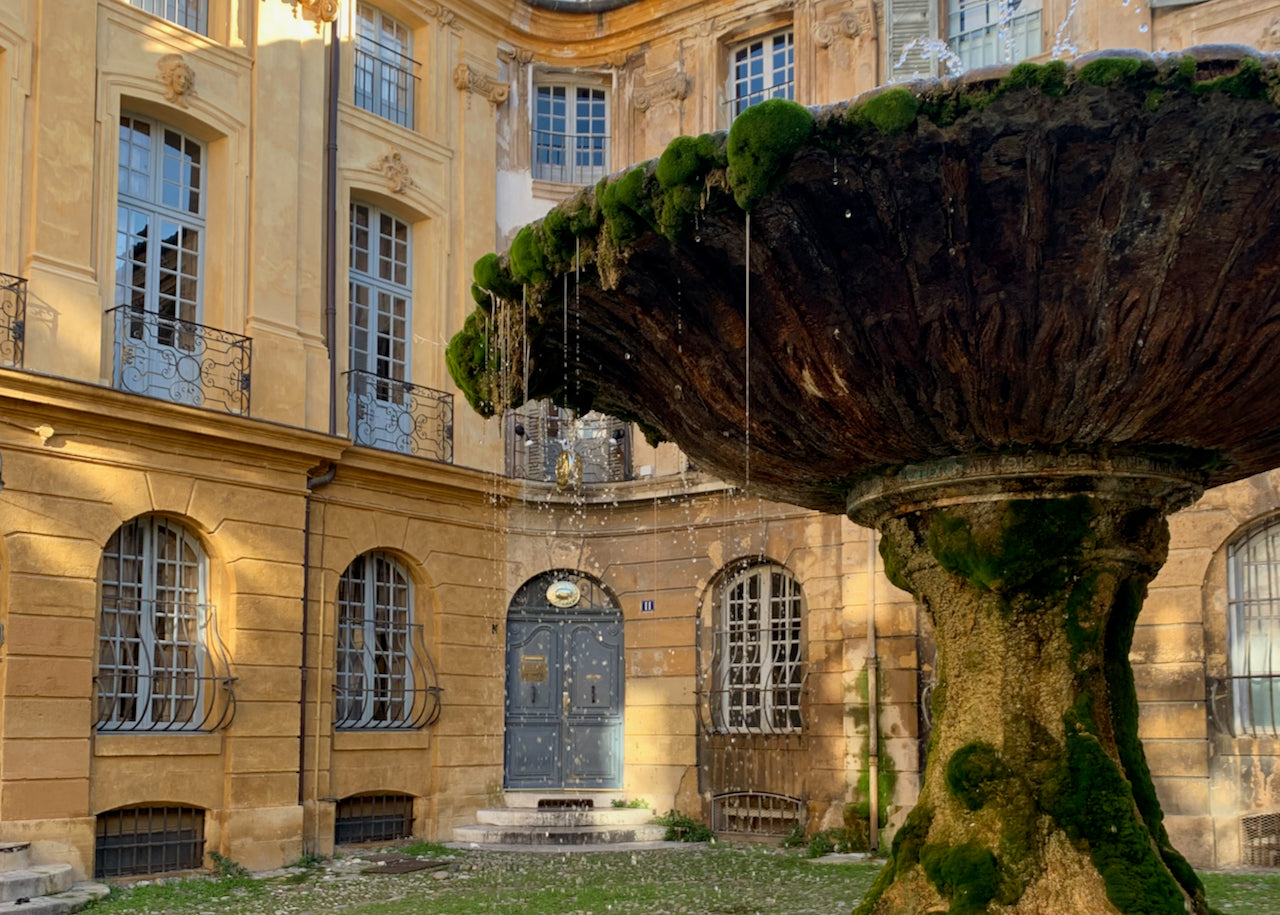 Aix-en-Provence, Aquae Sextiae in Latin, is a town defined by its waters since Roman times. Aix's thermal waters were well-established 1st century Roman baths and its fountains still grace nearly all of its public squares. In fact, Aix-en-Provence has the highest concentration of fountains in any European city, with over over 250 fountains in public and hidden spaces. The sources that feed these waters flow from the foothills of the Sainte-Victoire mountain.
Aix-en-Provence, Aquae Sextiae in Latin, is a town defined by its waters since Roman times. Aix's thermal waters were well-established 1st century Roman baths and its fountains still grace nearly all of its public squares. In fact, Aix-en-Provence has the highest concentration of fountains in any European city, with over over 250 fountains in public and hidden spaces. The sources that feed these waters flow from the foothills of the Sainte-Victoire mountain.

Aix-en-Provence’s reputation as a spa town dates back to Roman times. The Romans, recognizing the therapeutic benefits of the thermal waters, established the city as Aquae Sextiae in 123 BC. The name itself, meaning “the waters of Sextius,” pays homage to the springs that have been a source of healing and relaxation for millennia.
The thermal baths of Aix have been a haven for those seeking relief from various ailments. Rich in minerals such as calcium, magnesium, and sulfates, the waters are renowned for their ability to alleviate conditions like rheumatism, arthritis, and skin disorders. Today, modern spas and thermal establishments continue this legacy, offering visitors a chance to indulge in the healing properties of these ancient springs.

Aix-en-Provence was founded by the Roman consul Gaius Sextius Calvinus in 123 BC after a decisive battle against the local Celtic-Ligurian tribes. The city’s establishment as Aquae Sextiae signified the Romans’ recognition of the strategic and therapeutic value of the thermal springs. The city quickly became a thriving center of Roman life, featuring all the hallmarks of Roman civilization, including baths, an amphitheater, and an extensive network of aqueducts to supply the city’s water needs.
After the fall of the Roman Empire, Aix-en-Provence entered a period of turmoil and transformation. By the 12th century, it had become the capital of the County of Provence, and its prominence grew under the Counts of Provence.

The Renaissance period marked a golden age for Aix-en-Provence. The city became a center of art, culture, and learning, attracting scholars, artists, and writers. The University of Aix-Marseille, established in 1409, contributed significantly to the city’s intellectual and cultural life.
The 17th and 18th centuries saw the construction of many of Aix’s elegant mansions, or “hôtels particuliers,” as wealthy nobles and merchants sought to display their prosperity. The Cours Mirabeau, one of the most famous avenues in France, was developed during this period, lined with grand townhouses, cafes, and shops that continue to draw locals and tourists alike.

The fountains of Aix-en-Provence are not only beautiful works of art but also serve as historical markers, each with its own story to tell.

Among the most famous is the Fontaine de la Rotonde, located at the end of the Cours Mirabeau. This monumental fountain, built in 1860, features three statues representing Justice, Agriculture, and the Fine Arts.

Wandering through Aix, you’ll encounter fountains at almost every turn, from the intricate to the simple, each contributing to the city’s tranquil ambiance. They serve as perfect spots to pause, reflect, and soak in the beauty and history that surrounds you.

Photography and writing by Emilie Johnson. She lives in Provence and can be found on instagram at @emilie_joly_johnson



